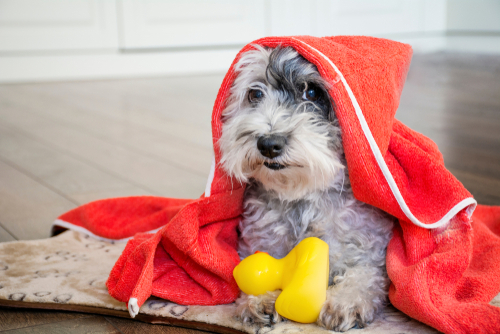If you caught our first lesson in the Rescue™ Crash-Course on Disinfectant Efficacy, you may have been left with some questions.
Although we broke down the different types of pathogens and how to tell if your disinfectant will kill them, one area that often causes confusion is whether disinfectants can be used on soft surfaces. Here we’ll explain the best way to get rid of pathogens on surfaces such as beds, pillows, toys and everything in between, and hopefully put your concerns to rest.
If you look at your disinfectant label, you’ll notice that the directions say “for use on hard, non-porous surfaces”. If you found this confusing, you’re definitely not alone – one of the most common questions we get is whether Rescue can be used on fabrics and other surfaces that don’t fall into the ‘hard non-porous’ category. Before going further, here are a few examples to explain the difference:
Hard, Non-Porous Surfaces
- Stainless steel
- Most plastics
- Rubbers
- Laminate
- Porcelain
- Ceramics
- Acrylics and resins
Soft, Porous Surfaces
- Fabrics in clothing, furniture upholstery or bedding
- Carpets
Soft surfaces, like the ones mentioned above, are tough to clean. Take your favorite sweater for instance – while the soft, porous fabric makes it comfortable to wear, it also makes it a nightmare :to disinfect since the many small holes and gaps in the material allow pathogens to hide. Compare this to a hard, non-porous surface like a stainless-steel table top – on surfaces like these there is nowhere for pathogens to run and hide. Does this mean that your disinfectant will only work on hard, non-porous surfaces? Not quite.
According to the EPA, no disinfectant can claim to disinfect soft surfaces. But as people started to recognize the role of soft surfaces in transmitting germs from one patient to the next, the EPA introduced the soft surface sanitizing claim. If your disinfectant has this claim, you can expect it to kill at least 99.9% of vegetative bacteria, like Lepto and Bordetella, on these surfaces.
While killing 99.9% of bacteria may sound great, this is not up to disinfectant standards – disinfectants are generally able to kill viruses and fungi too. So, while you may not technically be disinfecting these soft surfaces, you can still feel confident that many of the pathogens that you’re worried about will be eliminated. Here are a couple of points to keep in mind when making sure all your soft surfaces aren’t making patients sick:
- Although you can’t guarantee that your disinfectant is killing pathogens on soft surfaces, even the process of cleaning alone will likely get rid of most pathogens. Regular laundering of fabrics and cleaning of soft surfaces will go a long way in keeping them germ-free.
- Soft, porous surfaces don’t transmit pathogens as easily. So while they’re harder to clean, they’re also much less likely than hard, non-porous surfaces to spread germs from one animal to the next.
When it comes to disinfecting toys, collars, and everything in between, don’t panic. These soft surfaces don’t transmit germs as easily as hard ones, and using a product with a soft-surface sanitizing claim, in addition to regular cleaning, will help you kill many of the pathogens that do manage to make these surfaces their home.

